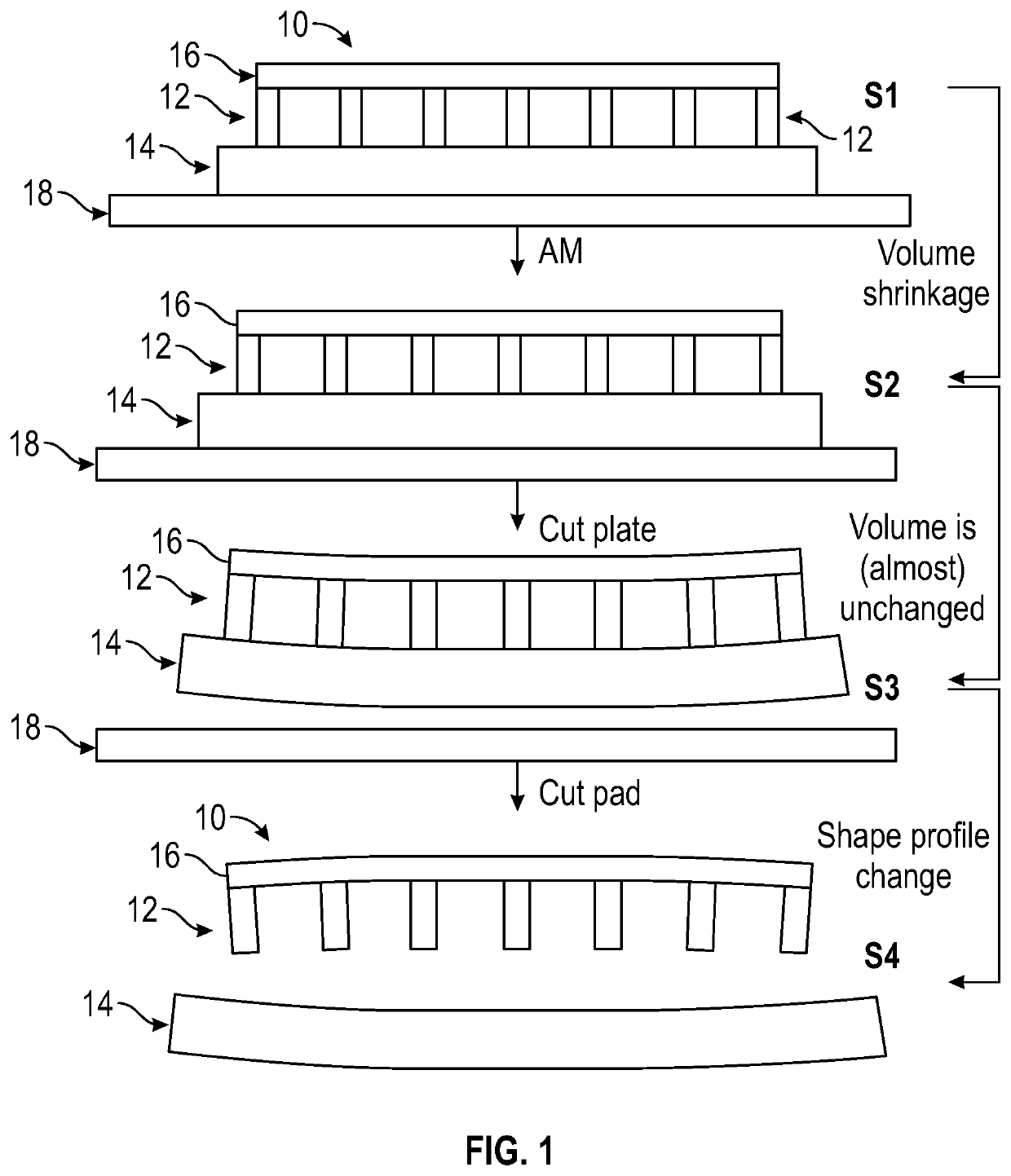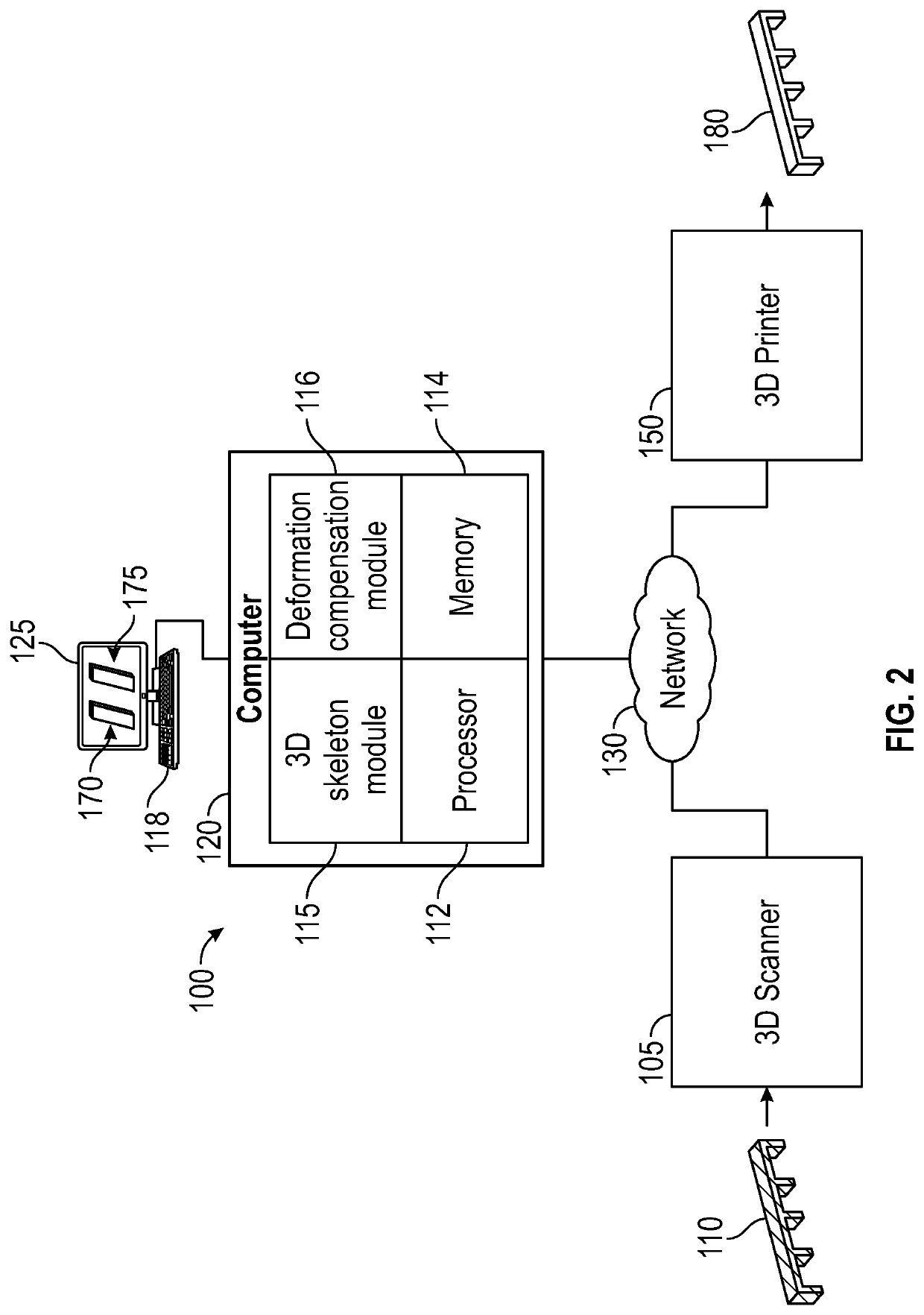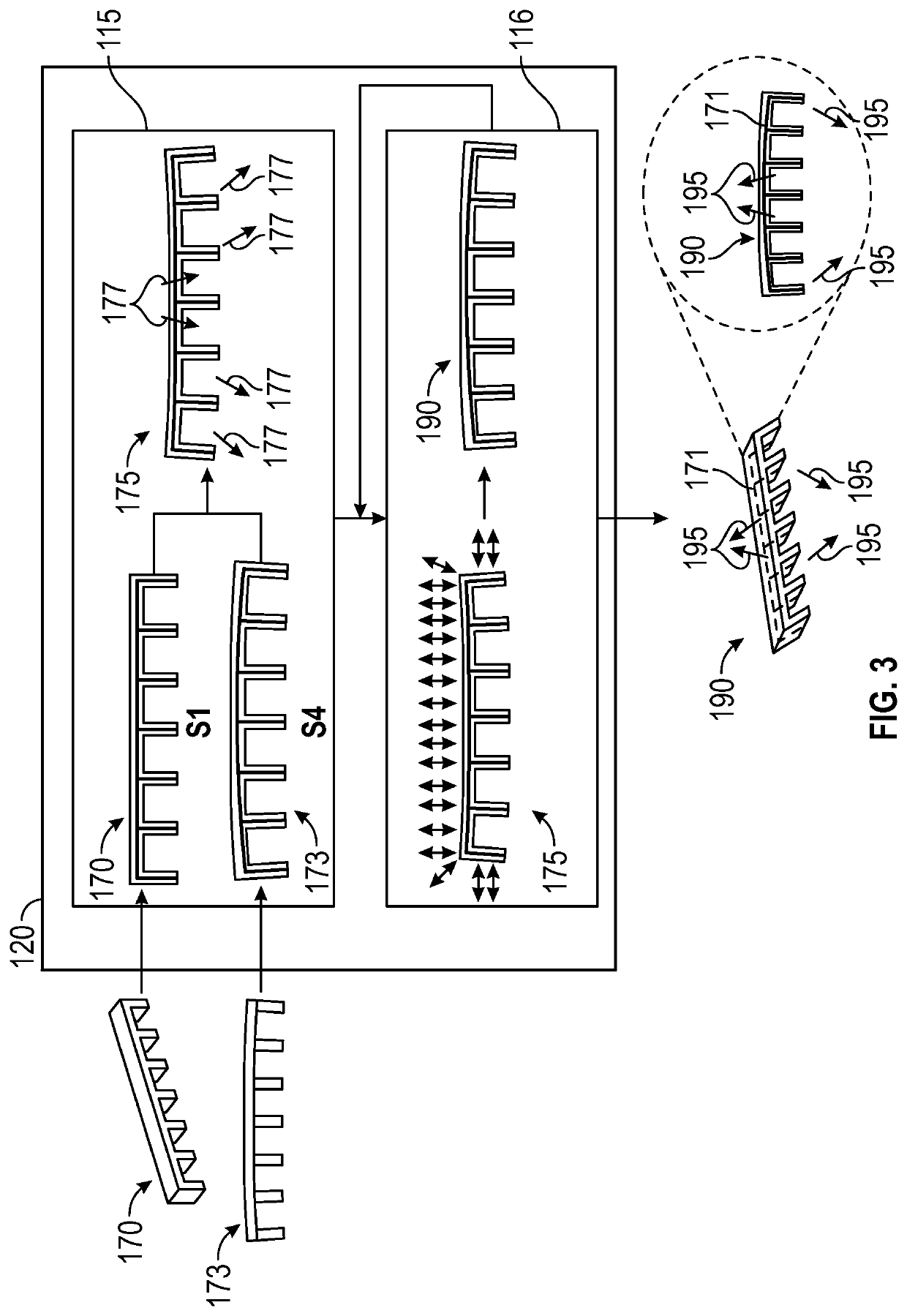Additive manufacturing including compensation modeling methodology with shape transformation
a compensation modeling and shape transformation technology, applied in the field of product manufacturing, can solve the problems of significant distortion and residual stress of additively manufactured components
- Summary
- Abstract
- Description
- Claims
- Application Information
AI Technical Summary
Benefits of technology
Problems solved by technology
Method used
Image
Examples
Embodiment Construction
[0016]A detailed description of one or more embodiments of the disclosed apparatus and method are presented herein by way of exemplification and not limitation with reference to the Figures.
[0017]The term “about” is intended to include the degree of error associated with measurement of the particular quantity based upon the equipment available at the time of filing the application. For example, “about” can include a range of ±8% or 5%, or 2% of a given value.
[0018]AM parts are susceptible to “springback” during the fabrication process. For instance, the part can realize compression and / or expansion states (e.g., bending) during fabrication. This springback phenomenon is typically caused by the part' inherent desire to return to its nominal profile following removal of the compression and / or expansion force. The resulting springback, however, causes distortion of the part along with residual stresses on one or more regions and / or connection points of the part.
[0019]In addition, AM pa...
PUM
| Property | Measurement | Unit |
|---|---|---|
| Volume | aaaaa | aaaaa |
| Shape | aaaaa | aaaaa |
| Deformation enthalpy | aaaaa | aaaaa |
Abstract
Description
Claims
Application Information
 Login to View More
Login to View More - R&D
- Intellectual Property
- Life Sciences
- Materials
- Tech Scout
- Unparalleled Data Quality
- Higher Quality Content
- 60% Fewer Hallucinations
Browse by: Latest US Patents, China's latest patents, Technical Efficacy Thesaurus, Application Domain, Technology Topic, Popular Technical Reports.
© 2025 PatSnap. All rights reserved.Legal|Privacy policy|Modern Slavery Act Transparency Statement|Sitemap|About US| Contact US: help@patsnap.com



